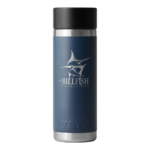
With the year coming to a close, we thank you for your support, as we reflect on key achievements in 2019.
- Deployed satellite tags on Atlantic blue marlin in the Gulf of Mexico, with help from constituents, for the purpose of collecting movement data, horizontal and vertical, so better insight can be gained on whether some marlin remain in the Gulf’s warm waters around oil rigs, where abundant prey species are found year round. This raises the next question whether rigs influence or alter natural behavior, such as feeding, spawning and movements. Significant changes could potentially contribute to evolutionary adaptations that impact stock status, habitat use, fishing and related economies. Once tag data is received in 2020, it will be analyzed and results shared.
- Completed the most comprehensive Atlantic blue marlin age and growth study, which helped advance aging techniques needed to improve the efficiency of estimating stock abundance in assessments for improved management and conservation decisions.
- Continued to develop a Swordfish Distribution Model, which is a sophisticated mathematical computer program, that will, based on a variety of data, provide scientists insights into where swordfish are located at different times throughout the year. Locations usually are associated with critical life stage areas, including pre-spawning, spawning, juvenile nursery areas, etc. Identifying these locations can facilitate other research to learn more about spawning rates, age and size at sexual maturity, age and size at recruitment (when fish grow to a size when they move into a targeted fish stock) sex ratio between males and females, spawning frequency, seasons and locations, to name a few, all needed for improved management and conservation.
- Achieved major successes in monitoring and challenging counter-productive U.S. federal fish policy initiatives, which were at the expense of species conservation, recreational fishing and economics, in the Pacific Ocean, Atlantic Ocean and Gulf of Mexico. In the Pacific, the government considered authorizing a shallow-set longline fishery for swordfish off California’s coast and in the Atlantic and Gulf, proposals were advanced to authorize measures for reinvigorating the pelagic longline swordfish fishery. The latter issue is anticipated to again become a major hot topic in 2020 for which your help will be needed.
- Initiated international review by many nations of a TBF letter pointing out failures by most nations to report recreationally landed billfish, which constitutes illegal, unreported and unregulated (IUU) landings in violation of an important measure of the international Commission. The letter was to apply pressure on other nations to report billfish landings data, both recreational and commercial fisheries. Only with all nations’ reported data can fishing be fairly regulated in support of responsible conservation and management.
- Announced the availability of a scholarship for a student pursuing PhD level billfish research.
Please consider joining TBF, if not already on board, or make a tax free year-end donation to support our critical billfish work. You can follow us on social media @thebillfishfoundation and be sure subscribe to our free monthly newsletter to stay updated on the latest billfish issues.






